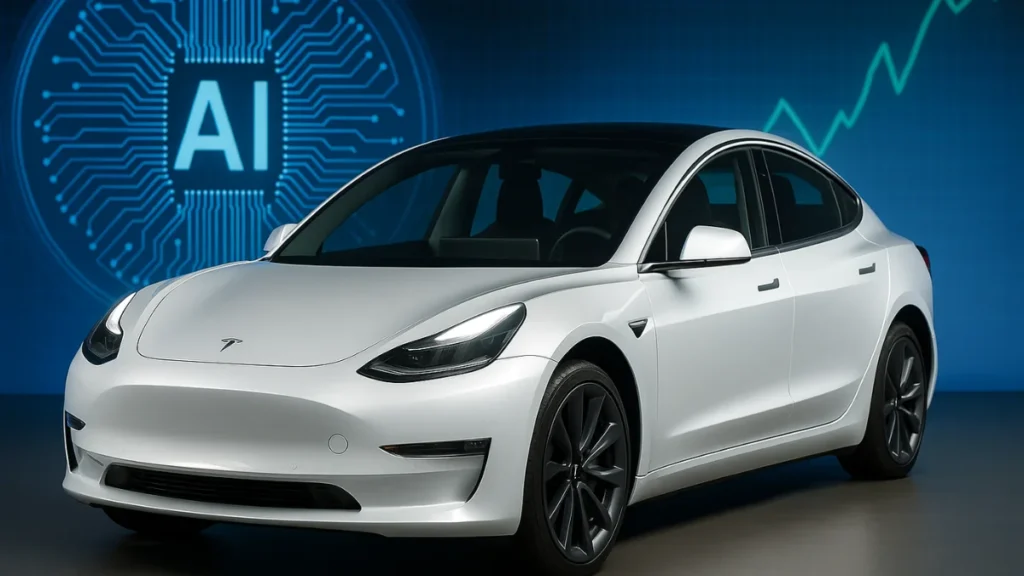Tesla’s once-dominant EV narrative is slipping as Q2 delivery numbers disappoint. Elon Musk, however, is doubling down on AI and robotaxi innovation—hoping it can offset waning global demand. But will this bold pivot help Tesla reclaim its tech crown?
Tesla is bracing for another rocky quarter as its second-quarter delivery numbers reveal a worrying trend: demand is weakening across key markets like Europe and the U.S. While production is slightly up year-over-year, it’s clear the company’s core EV business is losing momentum.
Key Takeaways:
- Tesla’s Q2 global deliveries estimated at 395,328, down 11% YoY
- U.S. and EU EV registrations dropped sharply, while competitors like GM gained ground
- Elon Musk now betting big on robotaxis and AI to reshape Tesla’s future
- Regulatory concerns grow after early robotaxi tests show safety lapses
- Tesla’s brand faces fallout from Musk’s political affiliations
According to Bloomberg estimates, Tesla is expected to report 395,328 global deliveries in Q2, down 11% from the same period last year. Despite a bump from Q1’s 336,700 units, it’s clear the company is struggling to hold ground in an increasingly crowded EV landscape.
Production numbers tell a slightly more optimistic story—Tesla reportedly built 443,321 vehicles, up from 410,800 a year earlier. Still, what’s rolling off the line isn’t translating into sales like it used to.
Europe and U.S. Sales Slide
In Europe, Tesla’s EV registrations dropped 27.9% year-over-year in May, even as the broader market grew by 25%. That marks five straight months of sliding Tesla sales in the region. Year-to-date figures show a sharp 37.1% drop to just over 75,000 units.
Across the Atlantic, things aren’t much better. In April, Tesla EV registrations in the U.S. declined 16%, while GM’s Chevrolet more than tripled its EV numbers, and Ford also saw a significant dip.
Analysts are sounding the alarm. Wells Fargo estimates Q2 deliveries are down 21% YoY—far worse than earlier projections. JPMorgan echoed the sentiment, cutting both delivery and earnings expectations for the quarter.
Musk’s Political Persona Hurting Tesla’s Brand?
Some analysts and investors suggest that Musk’s recent political involvement may be contributing to Tesla’s image problem. His public support of right-leaning figures and leadership of a U.S. government advisory group has alienated segments of Tesla’s original customer base.
As President Trump renews threats to cut government subsidies that benefit Musk-led companies, including Tesla, the political tension adds yet another layer of uncertainty.
Betting Big on Robotaxis and AI
In response to these headwinds, Musk is putting Tesla’s future on the line—this time with full self-driving technology and AI-powered robotaxis. The company has launched live robotaxi tests in Austin, Texas, signaling a strategic pivot from traditional EVs to autonomous tech.
Initial tests appeared promising but quickly drew scrutiny. Videos from the trial show Teslas speeding, cutting through turn-only lanes, and crossing double-yellow lines—raising safety concerns and putting regulatory pressure on the company.
Despite these setbacks, Musk remains bullish. He’s consistently touted the potential of AI and autonomous vehicles to unlock “trillions” in value for Tesla, suggesting this shift is not just a side project—but Tesla’s future.
Conclusion
Tesla is at a crossroads. With legacy EV competitors catching up fast and geopolitical drama swirling around Musk, the company’s pivot to AI and robotaxis feels like both a bold bet and a necessary one. The question now is whether the tech can deliver fast enough to rescue Tesla’s slipping EV dominance.
